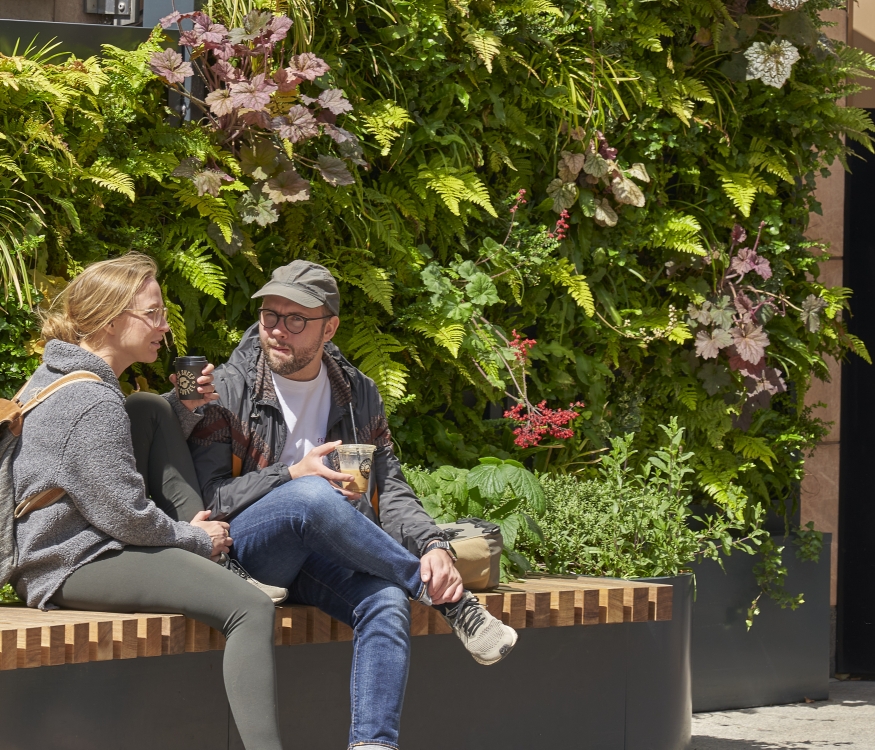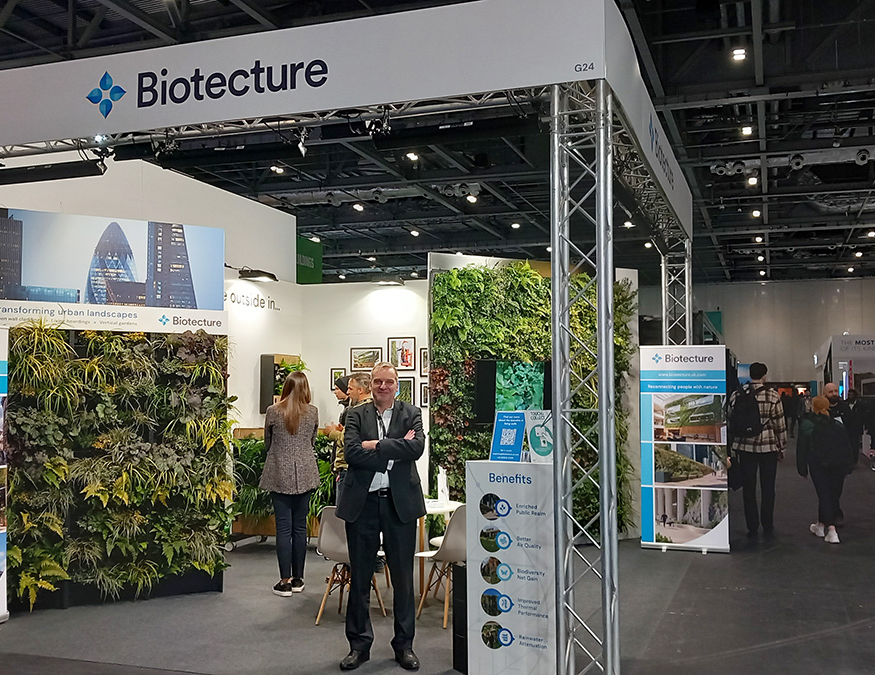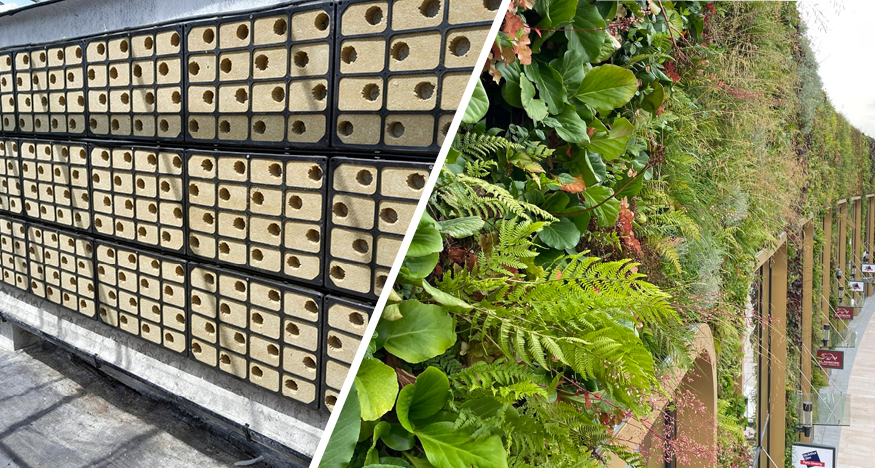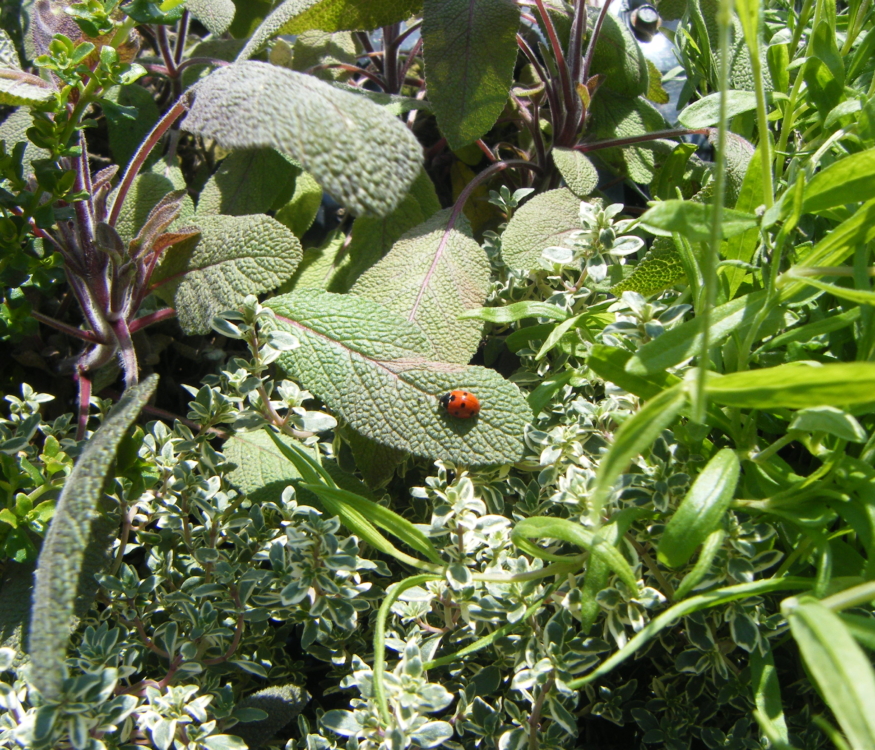Living walls, also known as green walls or vertical gardens, are a space-saving way to bring more greenery into our urban landscapes inside or out. Living walls provide an array of tangible benefits, from looking beautiful to improving air quality and boosting biodiversity. But what do you need to consider when designing one? In this blog post, we will run through some key considerations to keep in mind when incorporating a living wall into your next project.
1. Purpose and Goals
Before specifying a living wall, consider its primary function and objectives. Is aesthetics your primary driver, or do you also want it to serve a specific environmental purpose, e.g., air purification, noise reduction, or biodiversity? Establishing the goals early on will help guide design decisions and influence the selection of appropriate plant species.
2. Location and Orientation
Considering the location and orientation of the living wall is vital in ensuring its long-term survival and effectiveness. Factors such as sunlight exposure, wind patterns, and ambient temperature should be taken into account. Biotecture can advise if the proposed location of your living wall is appropriate and which plants would work best. South-facing elevations will allow for a wide variety of colorful flowering plants, while north-facing living walls require a more restrained palette of shade-tolerant plant species.
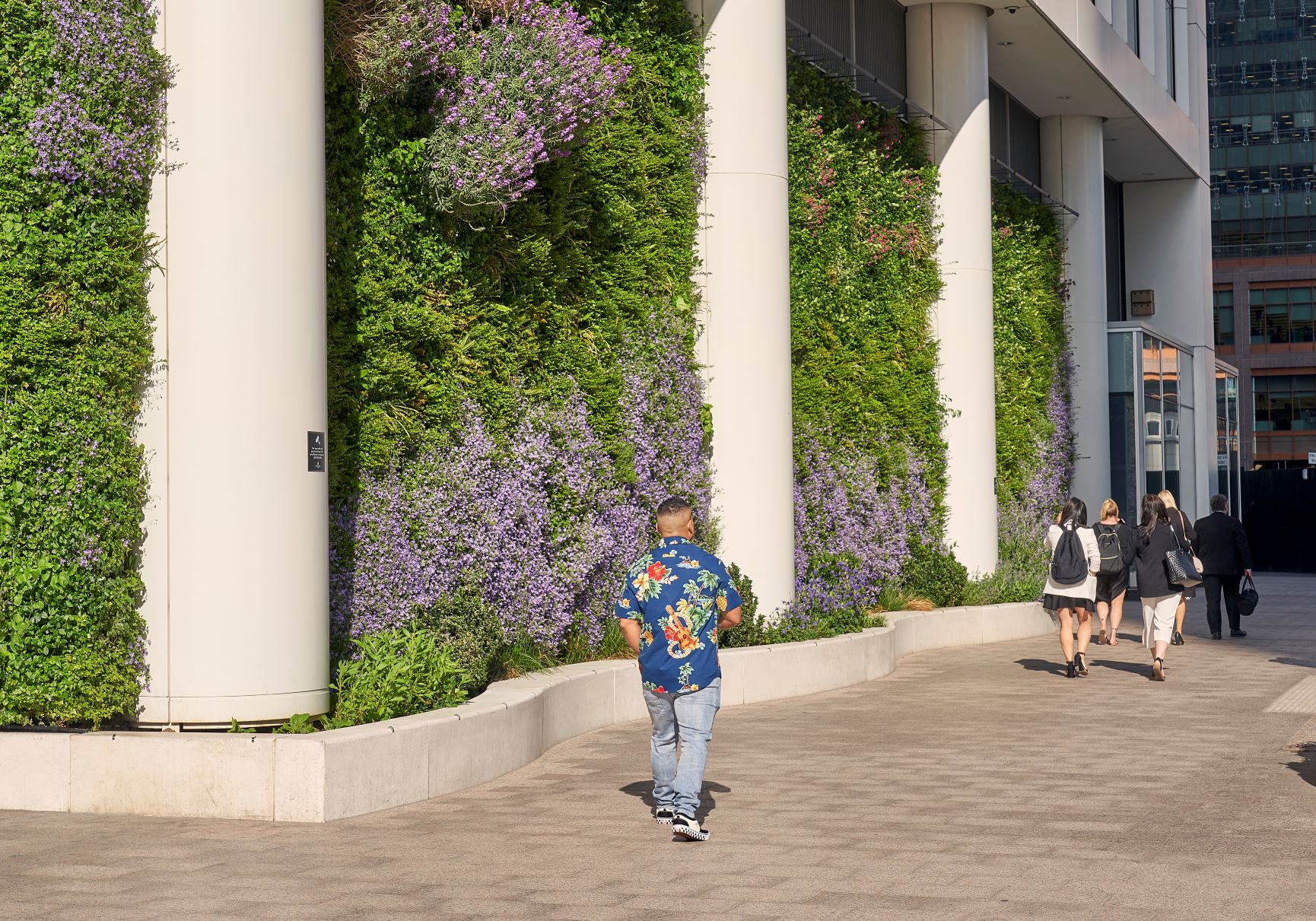
One and Five Bank Street, Canary Wharf
3. Choosing the right system
When specifying a living wall, it is essential to select a robust and reliable system that meets the required industry standards and has a proven track record of success. Biotecture’s BioPanel™ system is a fully comprehensive living wall solution that stands out for its rigorous testing and demonstrated compliance with regulatory requirements. Third-party assessments confirm that the BioPanel™ system complies with the Centre for Window and Cladding Technology (CWCT) requirements for external cladding materials. This validation ensures that the system adheres to strict quality and performance criteria, providing architects with added assurance in their specification process.
Additionally, independent analysis and destructive testing demonstrate that the BioPanel system meets Class B-s3, d2 fire performance ratings when in operational conditions, further reflecting its safety and reliability as a living wall system. Living cladding should always be designed in accordance with our Fire Safety Best Practice Guide.
When a living wall is being used for an application other than cladding, for example urban realm improvements, a simpler system can be considered. For example, Biotecture used the PlantBox system to transform key areas across the Canary Wharf estate. PlantBox was the right choice for this project because it only requires restraint fixings without putting additional load on the existing wall. It could also be installed in a tight timescale.
By choosing a proven system, architects can be confident that their living wall design will not only be visually appealing but also robust, safe, and compliant with industry standards.
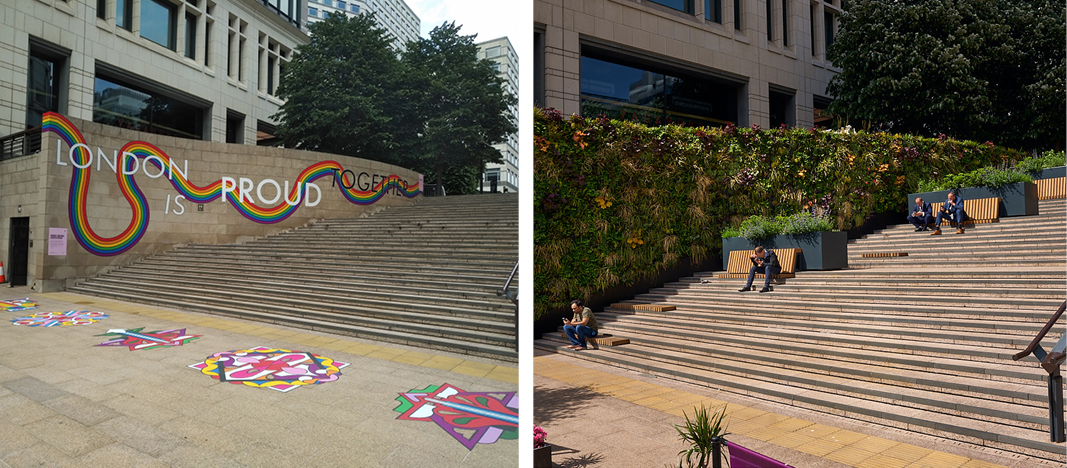
Before and After, Canary Wharf estate, Cubitt Steps
4. Hydroponics vs Soil?
While the idea of growing with soil seems natural, it poses challenges, especially in non-natural, thin substrate locations like commercial greenhouses and vertical green walls. Soil, in such environments, lacks the self-regulatory systems found in natural landscapes, leading to a decline in its ability to promote plant growth over time. Enter Grodan, Biotecture’s growing medium for our BioPanel™ system. Its hydrophilic nature, dimensional stability, and predictability make it a superior choice for thin substrate applications. Grodan retains moisture efficiently and ensures an oxygen-rich environment vital for healthy root growth. Moreover, it is 100% recyclable, contributing to its status as an environmentally-friendly option.
To find out more about whey we use hydroponics read this blog.
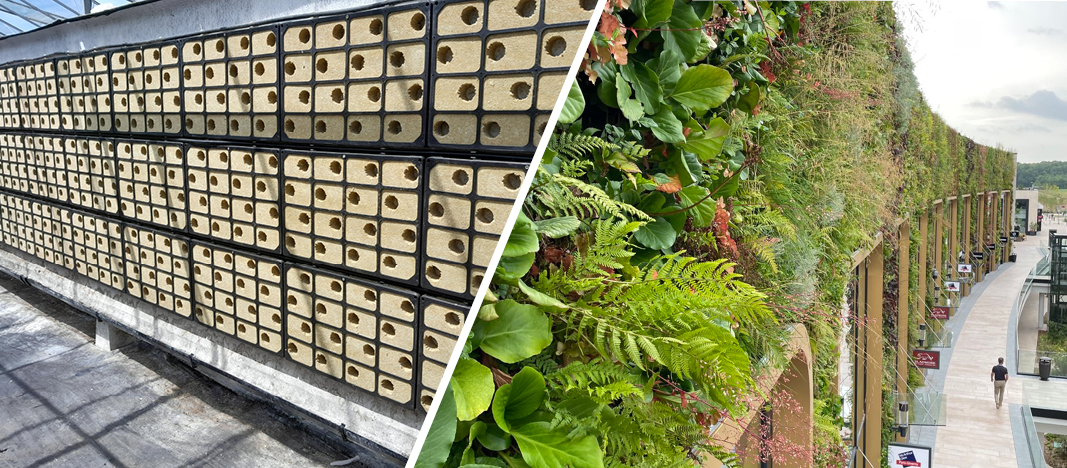
5. Structural Support
Installing a living wall cladding system on an existing or new structure requires an evaluation of the structural support and modifications to accommodate the additional weight. The load-bearing capacity should be assessed by a structural engineer to ensure that the wall can safely handle the weight of the plants, substrate, and irrigation system. Biotecture’s BioPanel living cladding system weighs approximately 75kg per square meter when fully saturated. However, the stackable, modular PlantBox system is ground-bearing and only requires restraint fixings. This makes it ideal for quick win transformations. For example, Biotecture installed PlantBox living walls across the Canary Wharf Estate.
6. Irrigation
A well-designed irrigation system is essential for maintaining a healthy living wall. The BioPanel™ system includes a fully integrated automatic remotely monitored irrigation system. A plant room or roadside cabinet will be required to house the controller, pump, and other associated components. As part of our maintenance packages, we remotely monitor and manage the irrigation system, allowing us to adapt to the ever-changing needs of a living wall and identify and rectify faults before they affect the living wall. PlantBox living walls can have a simpler irrigation system, from a simple hoselock connection with a tap timer to a fully automatic irrigation system.
7. Plant Selection
Choosing appropriate plant species for the living wall will ensure it looks great for years to come. Our design team will pick species from our extensive tried and tested plant database, chosen to complement the local climatic conditions, aesthetic, and environmental aspirations. To ensure the wall looks great all year round, we choose evergreen plant species; seasonal flowering plants can be included for a pop of color and to attract pollinators. Plant species can be zoned or as part of a cohesive matrix. This means we can incorporate loose designs into the living wall like this one at Legal and General in Cardiff.
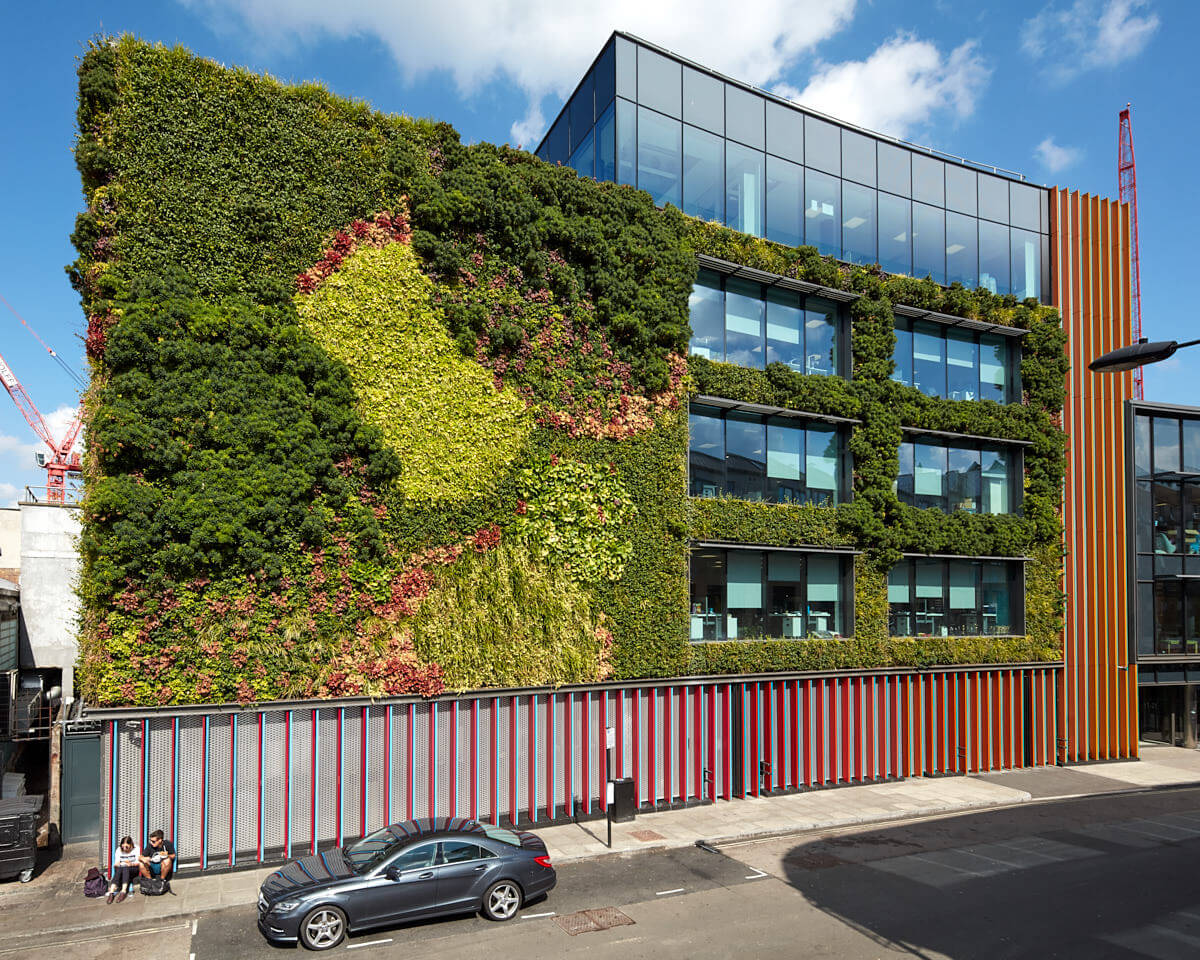
8. Lighting
Living walls need at least 1000 lux for plants to thrive; if the location doesn’t get enough light, supplementary lighting will be required. Although Biotecture can advise on requirements, we recommend working with a lighting engineer.
9. Creating Habitats
Biodiversity is often high on the agenda when designing a living wall. Including a wide variety of plants and native species in living walls fosters biodiversity. Including flowering plants ensures a continuous food source for pollinating insects, with staggered blooming times to maintain nutrition. Incorporating habitat boxes into living walls offers safe havens for insects. These features cater to lacewings, ladybirds, invertebrates, and various solitary bee species, contributing to insect diversity.
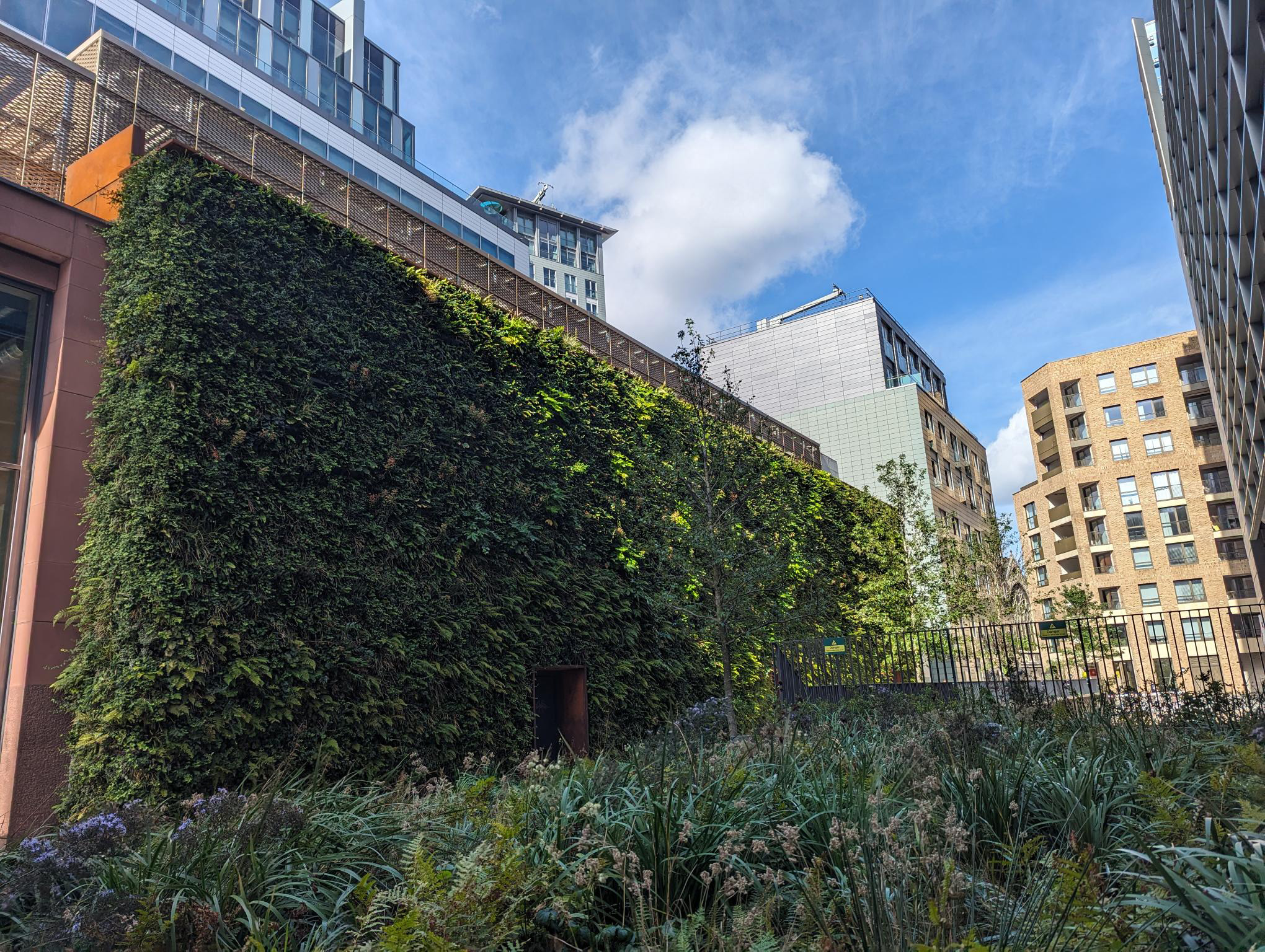
The Living wall at Regent’s Place London includes 50 habitat boxes and 70 integrated planters to allow larger plants and create deeper growth.
10. Access
An often overlooked yet critical aspect of specifying a living wall is ensuring adequate access for installation, maintenance, and inspection. Careful planning for access points should be integrated into the design to facilitate regular and efficient maintenance tasks. Provisions may include fixed access points such as catwalks, BMU systems, or even roof anchors for rope access. Access for temporary equipment such as scaffolds, scissor lifts, and cherry pickers should be considered. Biotecture can advise at the design stage.
11. Maintenance and Care
The long-term success of a living wall is dependent upon a robust maintenance and care program. Before specifying a living wall, consider the ongoing maintenance requirements and ensure you provide clear guidance to the end-users or caretakers. Biotecture offers a full maintenance service to keep living walls looking their best. We also offer a performance guarantee which ensures 95% plant coverage at all times.
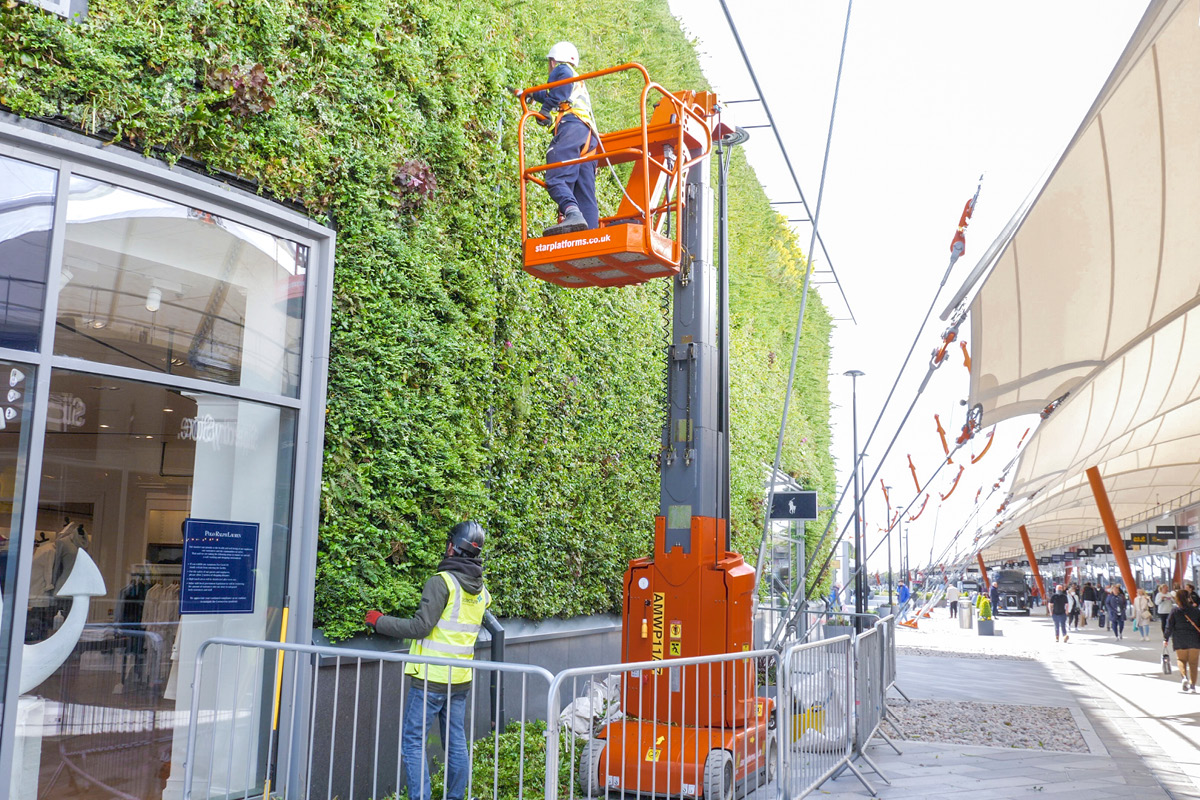
We carry out a full maintenance programme including daily remote monitoring and regular maintenance visits which have become a visitor attraction! Photography: Carl Pendle
Conclusion
Living walls offer immense potential for architects and designers to create greener cityscapes. Well-designed, installed, and maintained living walls will thrive for years to come, providing lasting tangible benefits. Biotecture’s design and project management team can take your project from concept right through to installation and beyond.
Get in touch:
- Email: enquiries@biotecture.uk.com
- Phone: +44 (0)1243 572118

